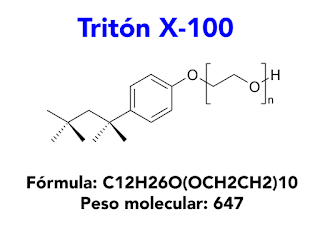Effective chemical virus inactivation compatible with accurate serodiagnosis of infections
OBJECTIVES: Highly pathogenic viruses such as Ebola virus are a threat to routine laboratory workers. Inactivation procedures with Triton X-100 0.1% and/or heat are currently recommended, but have unknown effects on the accuracy of serological testing. Furthermore, virus inactivation by Triton X-100 0.1% was shown to be ineffective in serum. This study aimed to demonstrate virus inactivation in serum by Triton X-100 1% and maintained accuracy of serological testing.
METHODS: A panel of 19 serological tests was run on patient serum samples after treatment with Triton X-100 1%, 0.1%, and 0.1% + heat inactivation at 60°C for 1h. Mean differences between measurements (bias) were calculated applying the Bland-Altman method. To determine effectiveness of virus inactivation, herpes simplex virus 1 (HSV-1) was spiked into medium containing 90% or 1% serum, and treated with Triton X-100 0.1% or 1%. Infectious titers were then determined on Vero cells.
RESULTS: Serological measurements showed good agreement between controls and samples treated with Triton X-100 0.1% and 1%, with an estimated bias of -0.6±9.2% (n=258) and -0.1±18.6% (n=174), respectively. Discordant qualitative results were rare. Conversely, heat inactivation alone, and combined with Triton X-100 0.1% triggered a bias of 17.5±66.4% (n=200) and 37.9±79.8% (n=160), respectively. Triton X-100 1% completely inactivated HSV-1 in 1% and 90% serum while Triton X-100 0.1% failed to do so in 90% serum.
CONCLUSIONS: Unlike heat inactivation, Triton X-100 1% enabled accurate serological testing and completely inactivated HSV-1 in serum. This simple method could allow safe routine serological diagnostics in high-risk patients.
REFERENCE:
Remy MM, et al. Effective chemical virus inactivation of patient serum compatible with accurate serodiagnosis of infections. Clin Microbiol Infect. 2018 Oct 27. pii: S1198-743X(18)30721-3. doi: 10.1016/j.cmi.2018.10.016.
-----------------------------------------------------------
Sigue este Blog en Facebook y Twitter
Ayúdanos a traducir las fichas de seguridad de microorganismos. www.seguridadbiologica.blogspot.com
-----------------------------------------------------------
METHODS: A panel of 19 serological tests was run on patient serum samples after treatment with Triton X-100 1%, 0.1%, and 0.1% + heat inactivation at 60°C for 1h. Mean differences between measurements (bias) were calculated applying the Bland-Altman method. To determine effectiveness of virus inactivation, herpes simplex virus 1 (HSV-1) was spiked into medium containing 90% or 1% serum, and treated with Triton X-100 0.1% or 1%. Infectious titers were then determined on Vero cells.
RESULTS: Serological measurements showed good agreement between controls and samples treated with Triton X-100 0.1% and 1%, with an estimated bias of -0.6±9.2% (n=258) and -0.1±18.6% (n=174), respectively. Discordant qualitative results were rare. Conversely, heat inactivation alone, and combined with Triton X-100 0.1% triggered a bias of 17.5±66.4% (n=200) and 37.9±79.8% (n=160), respectively. Triton X-100 1% completely inactivated HSV-1 in 1% and 90% serum while Triton X-100 0.1% failed to do so in 90% serum.
CONCLUSIONS: Unlike heat inactivation, Triton X-100 1% enabled accurate serological testing and completely inactivated HSV-1 in serum. This simple method could allow safe routine serological diagnostics in high-risk patients.
REFERENCE:
Remy MM, et al. Effective chemical virus inactivation of patient serum compatible with accurate serodiagnosis of infections. Clin Microbiol Infect. 2018 Oct 27. pii: S1198-743X(18)30721-3. doi: 10.1016/j.cmi.2018.10.016.
-----------------------------------------------------------
Sigue este Blog en Facebook y Twitter
Ayúdanos a traducir las fichas de seguridad de microorganismos. www.seguridadbiologica.blogspot.com
-----------------------------------------------------------




Comentarios